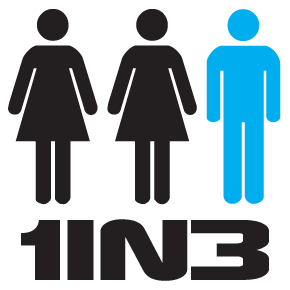Open letter from 1IN3 to Jane Gilmore, Daily Life columnist and Candice Chung, Daily Life Editor

Dear Jane and Candice,
We are writing to you to request that you correct some serious factual errors contained in your article "The 'One in Three' claim about male domestic violence victims is a myth" (April 30). We sincerely hope that Daily Life adheres to the principles of the Australian Press Council concerning accuracy and clarity.
We believe the errors to be as follows:
1. You state that the One in Three Campaign website claims the source of the 'One in Three' claim is The Australia Bureau of Statistics (ABS) Personal Safety Survey (PSS). This is quite incorrect. If you look at the overview page on our website, you will see that we cite seventeen different authoritative sources, including the PSS, but also other community surveys, crime, police, homicide, hospital, and protection order statistics, all demonstrating that one in three victims of family violence is male. For example, the NSW Auditor General found that 34% (more than one in three) domestic and family violence incidents recorded by Police in 2010 involved male victims and 30% (almost one in three) involved female perpetrators.
2. You note correctly that the data in Table 3 of the PSS appearing to suggest that males are 33 per cent of people who have experienced an act of violence from a current partner in the last 12 months is marked with a warning that states: "Estimate has a relative standard error of 25 per cent to 50 per cent and should be used with caution." The reason for this large error is the biased sample used by the ABS for the PSS. They surveyed 13,307 fully responding females but only 3,743 fully responding males. If an equal number of males and females had been sampled, the relative error in question would have been reduced. Nevertheless, if one looks at Table 4 of the PSS, you will see that 119,600 males and 237,100 females had experienced violence from a current partner since the age of 15. There is no warning about relative standard error here. And the proportion of male victims is exactly the same as the last 12 months data: exactly one third of victims are male.
3. You refer to Table 22 about the frequency of partner violence, again stating incorrectly that "current partner violence is unreliable." You appear to have ignored the robust data on current partner violence (there is no warning about relative standard error) indicating that one third of people who reported more than one violent incident from a current partner were male (77,800 males and 154,500 females).
4. You claim that the PSS doesn't ask if respondents felt frightened or helpless or controlled. Table 32 found that more than one in three victims of partner emotional abuse were male (37.1% in the last 12 months; 36.3% since the age of 15) and Table 33 found that around half of these males experienced anxiety or fear due to the emotional abuse (46.1%).
5. You claim correctly that the ABS PSS is limited as a tool in understanding the dynamics of domestic violence. However you infer that the only people using the ABS PSS as a good benchmark of domestic and family violence are those making the 'One in Three' claim, and that this is done so deliberately "in its attempts to divert attention away from male violence". The ABS PSS is acknowledged to be the best indicator of the levels of domestic and family violence in Australia by every significant government and NGO in the sector: ANROWS, White Ribbon, Our Watch, etc. For example, ANROWS relies almost completely on ABS PSS data for it's Fact Sheet on Key Statistics on Violence Against Women. If the data can be legitimately used by these respected organisations, it can also be used by advocates for male victims of family violence.
6. You claim that we, as a society, aren't ignoring the needs of male victims. The NSW Government Legislative Council’s Standing Committee on Social Issues report on domestic violence trends and issues in NSW found that "Male victims have been much less visible and able to access supports than should be the case". It further recognised "the gap in services for male victims and [encouraged] the government to examine how services can most appropriately be provided to male victims of domestic violence".
We hope you are able to correct these errors and misrepresentations as a matter of urgency.
Yours sincerely,
Greg Andresen
Senior Researcher
One in Three Campaign
